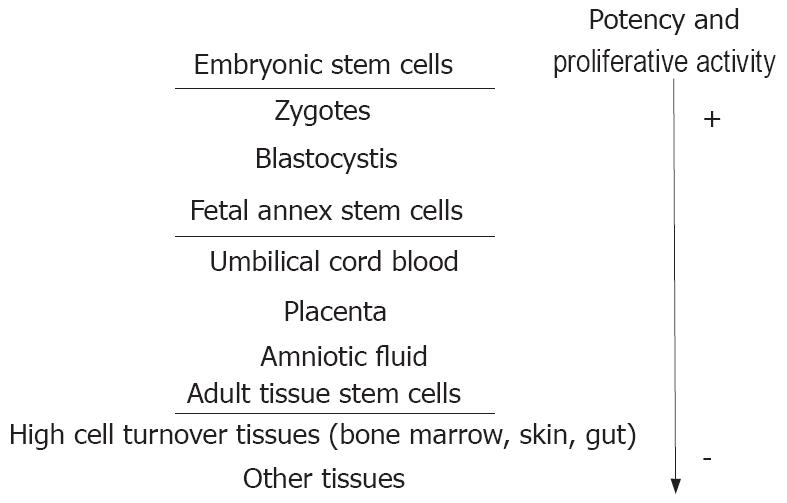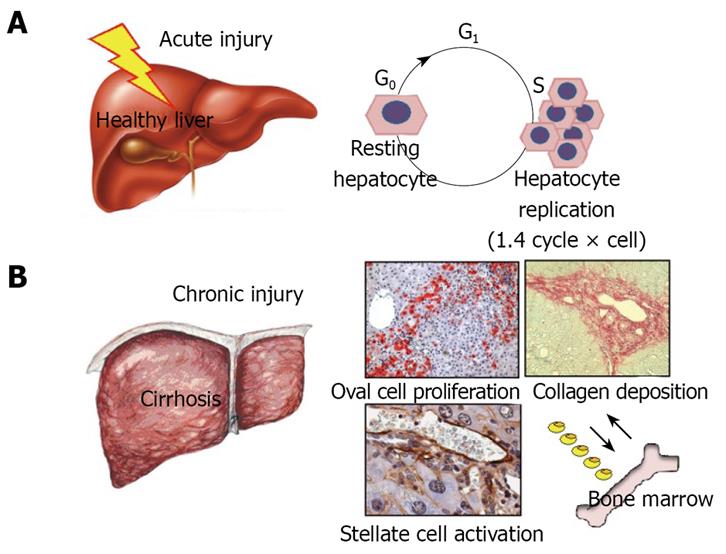Copyright
©2008 The WJG Press and Baishideng.
World J Gastroenterol. Aug 7, 2008; 14(29): 4593-4599
Published online Aug 7, 2008. doi: 10.3748/wjg.14.4593
Published online Aug 7, 2008. doi: 10.3748/wjg.14.4593
Figure 1 Stem cell hierarchy in humans.
While embryonic stem cells are the only ones to be totipotential, adult tissues with high cellular turnover (e.g. skin, gut mucosa and bone marrow) retain a population of stem cells with restricted differentiation potential that constantly supply the tissue of new cells.
Figure 2 Under physiological conditions, the liver does not need any external source of cells to repair injury, as resting hepatocytes have the ability to re-enter the cell cycle rapidly and efficiently after an injury has occurred (A).
In persistent liver injury, as is the case with liver cirrhosis, the sustained proliferative stress prematurely ages the hepatocytes and exhausts their ability to replicate. In this context hepatic progenitor cells, or oval cells as they are called in rodents where they were first described, appear as a rich population of small round cells spreading from the periportal area into the parenchyma. The contribution of bone marrow derived stem cells to tissue regeneration in chronic liver diseases is still debated (B).
- Citation: Lorenzini S, Gitto S, Grandini E, Andreone P, Bernardi M. Stem cells for end stage liver disease: How far have we got? World J Gastroenterol 2008; 14(29): 4593-4599
- URL: https://www.wjgnet.com/1007-9327/full/v14/i29/4593.htm
- DOI: https://dx.doi.org/10.3748/wjg.14.4593










